New Boston Historical Society
New Boston, New Hampshire
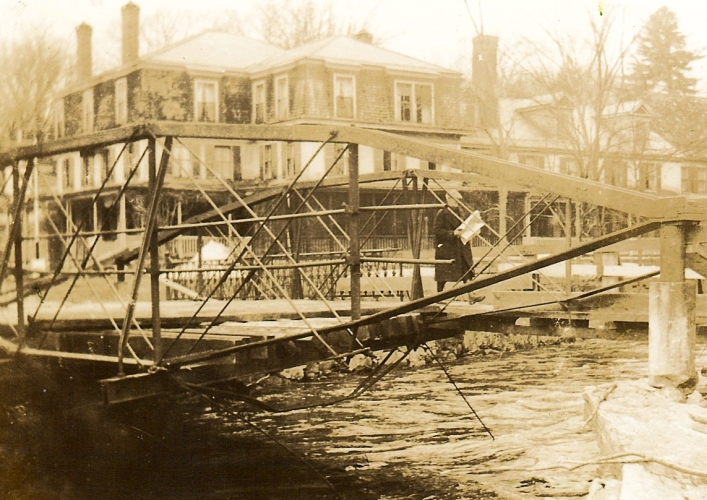
New Boston bridge after the Flood of 1936
The bridge was repaired quickly but The Tavern closed the next year.
Leaving New Boston - the Long Decline of a New England Town
In its first hundred years, New Boston grew from a settlement of a few dozen English-speaking people to a bustling town of 1,700 inhabitants.In its second hundred years New Boston's population grew smaller in every census until 1930, when only 693 people called New Boston home. Compared to 1830, one thousand fewer people lived in our town. What happened?
As we discussed in the Early Years and Made in New Boston, our town owed its early prosperity to timber, agriculture and manufacturing. As trees were logged for ships' masts and lumber, the land was cleared for farming. Now if you have ever run a rototiller through a New Boston garden you know that our soil is best suited for growing large chunks of granite rock. Farmers extracted boulders from their fields and built the miles of stone walls we see today, but more boulders appeared as if by magic.
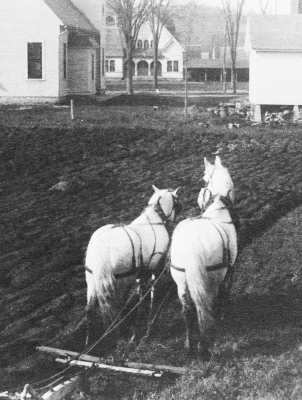
Plow horses behind the Community Church.
The old Baptist Church can be seen in the distance; its services ceased in the 1930s due to declining membership.
There are at least five events which contributed to the 100-year decline of New Boston (and many other New England towns):
- 1825 - the Erie Canal is completed
- 1839 - Stark Mill No. 1 opens in Manchester, NH
- 1848 - gold is discovered in California
- 1861 - the Civil War begins
- 1869 - the Transcontinental Railroad is completed
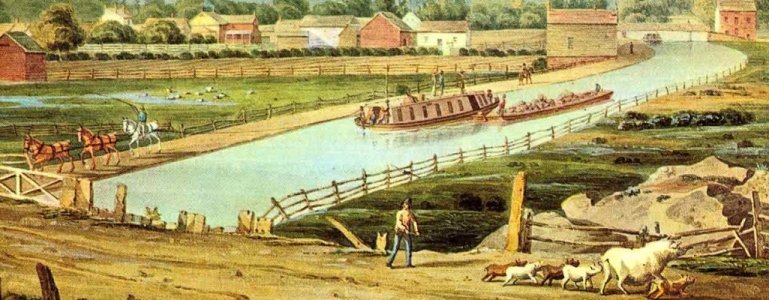
The Erie Canal in New York state connects the Great Lakes to the Hudson River. The canal made it possible for mid-west farmers to ship tons of grain to East Coast markets cheaply via canal boats - a single mule could tow a barge carrying 30 tons of cargo. New England farmers couldn't compete. Some New Englanders moved west to better farm lands; others switched to producing milk and other products that couldn't be shipped long distances in the days before refrigeration.
Mills and cities
The Amoskeag Mills of Manchester NH employed hundreds of "mill girls", young women recruited from local farms. When the mills first opened, a New Boston farmer could send his daughter to work in the mills and be assured that she would have decent food, comfortable lodging, and social activities under the supervision of respectable women who enforced strict codes of conduct. Later, working conditions and hours and wages became less attractive, but by this time many young people had moved to cities like Manchester, Lawrence and Lowell to find employment.
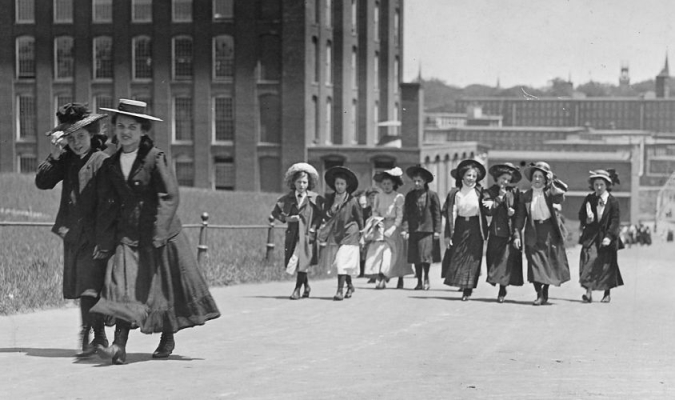
Amoskeag mill girls
In 1848 gold nuggets were discovered at Sutter's Mill in California. 300,000 people went west before gold fever subsided. (See our Gold Rush page.) Some, like James Todd, returned home. Others stayed in California, perhaps to escape New Boston winters and black flies. Travel from the east coast to California was by ship, with an overland journey in Panama, because the railroad had not been completed at that time.
Civil War
In 1861 the Confederate States seceded and the American Civil War began. Eighty-six New Boston men volunteered to serve in the War of Rebellion, and these men traveled all over the eastern United States. When they came home - if they came home - they told stories of the excellent farm land they saw once they'd left New England.
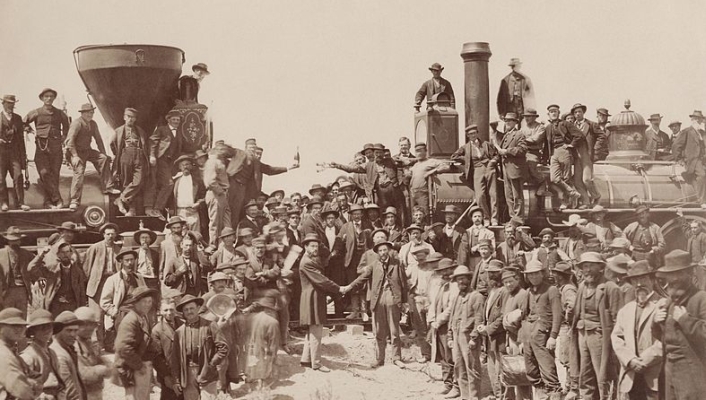
Transcontinental Railroad ceremony in 1869, or possibly a hat salesmen's convention
In 1869 a golden spike was driven to celebrate the completion of a railroad network which joined all the 37 United States from the Atlantic to the Pacific. It was now possible to travel almost anywhere - quickly, comfortably and inexpensively. ("Almost anywhere" as New Boston itself wasn't connected to the outside world via railroad until 1893.)
* * *
What we see above are (1) economic reasons to leave New Boston, (2) a series of events that exposed New Boston men and women to opportunities near and far, and (3) improved transportation that made it easier to go away. This confluence of circumstances occurred in small towns all over New England.In the 1890s New England towns began to host "Old Home Day" events, called "Old Folks Day" in New Boston, to encourage emigrants to come home again to visit and perhaps to stay. Our records of Old Folks Day in New Boston suggest that the food and drink that were served would be incentives to return. The lengthy sentimental speeches and poetry, on the other hand, may not have helped.
The U.S. Census of 1940 was the first census in 100 years to show an up-tick in New Boston's population, and the town hasn't stopped growing since.
In 2017 there are still concerns about young people moving away. However, of all the problems people discuss at Dodge's Store or the town dump, New Boston getting smaller is not one of them!
If you would like to read more about this topic, Michael M. Bell wrote an interesting thesis "Did New England Go Downhill?" which argues that the traditional model of the Decline of New England Agriculture as I've decribed it above, "one of the best-known, generally accepted themes in American historical geography", misrepresents and distorts the data.
I don't agree with all of Bell's interpretations of the data (for example I think it's significant that only 33% of land is tillable in our region) but Bell is a university professor with lots of degrees and I am not.
Read Bell's paper for some provocative ideas. --Dan R. 2017
